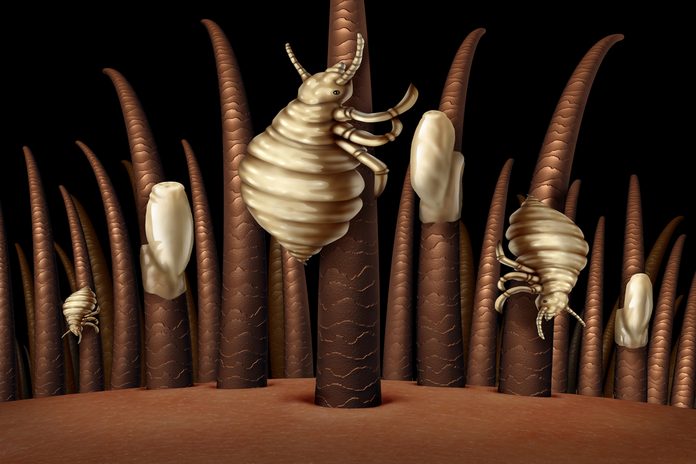Lice are wingless, tiny, parasitic insects that feed themselves on human blood. They can be very easily spread — especially by school-going children — by sharing belongings and close personal contact.
Head lice are found mostly behind the ear and on the back of the neck. Although lice can’t fly or jump, they can spread easily from one person to another through head-to-head contact or by sharing clothing or personal items (such as a hairbrush, hat, or a towel). Contrary to a famous myth, getting head lice has nothing to do with personal hygiene.
Adult female lice lay six to nine eggs per day on your scalp, and they spread from there. Lice have three forms. Nits, or eggs are laid onto the shaft of the hair. The eggs that are less than 5-6 millimeters from the scalp hatch mostly. These eggs are usually attached to the hair by sticky secretions from the female louse.
The eggs hatch within a week, producing a nymph. These nymphs then go through three successive growth spurts. During these stages, they molt until they become adults.
Adult lice are nearly the size of a sesame seed, and sometimes it is difficult to see them because they can be of any color from brown to white to tan.
Lice usually feed on human blood four to five times a day. They use their mouthparts to bite the skin and then secrete a substance to block clotting.

It is important to note that anyone can get lice infestations; however, some people are at a higher risk of getting lice.
- Nits, or lice eggs –They’re tiny– about half the size of a pinhead. It is hard to see them. The oval-shaped nits often look white or yellow, but may have the same color as your hair. Nits attached at the first 1-2 inches of hair shaft near the scalp are very hard to remove, but those at the end of the hair come off quite easily. You may confuse these tiny eggs with flakes from hairspray build-up or dandruff. Head lice eggs usually hatch in 7 to 9 days. When they hatch, they leave behind transparent shells that remain attached to the hair shaft and appear more grayish.
- A nymph– It is a baby louse. It’s the one that hatches from the nit. It feeds on your scalp blood and continues to grow for 9 to 12 days. Nymphs (as well as adult lice) avoid light and move quickly. Mites begin to appear in your scalp and hair, on your skin, and on any other thing that comes in contact with your head. Itching might not start at that time.
- Adult lice – These are about the size of a sesame seed, 2-3 millimeters long. They’re grayish white or tan. The color can be darker or lighter, depending on your hair color. Adult lice contain six legs with claws at their ends that allow them to hold your hair firmly. Typically, adult head lice can live 30 days within your head. If they fall off from your head, they die within 1 to 2 days.

